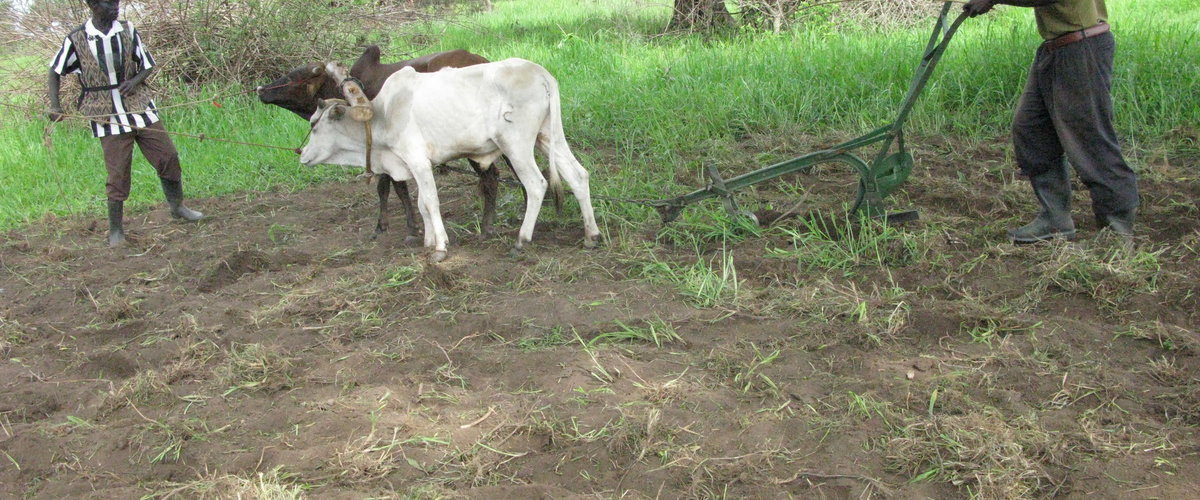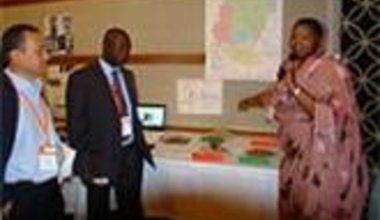From hoes to oxen
Farmers in five counties of Central and Eastern Equatoria states are throwing away their labour-intensive hoes and putting oxen to work in plowing the land.
Farmers in five counties of Central and Eastern Equatoria states are throwing away their labour-intensive hoes and putting oxen to work in plowing the land.
Tilling a 1.5 feddan (one hectare) plot of land takes about two weeks using a hand-held hoe, while oxen do the job in only a day, according to Augustine Bullen, a senior official of the non-governmental organization (NGO) Action Africa Help International (AAHI).
The NGO has 15 farmers' groups in its programme of food and income security, which was launched in the last quarter of 2007, said Mr. Bullen. "We have distributed 30 bulls (two for each farmers' group) and 15 ox-carts to selected contract farmers, whom we train in the five counties."
The farmers in the project, sponsored by the European Commission through the Interchurch Organization for Development and Cooperation, are looking forward to bigger harvests. "I am tired of digging using a hoe and yet producing not even enough to feed my family. I will be able to cultivate large fields and produce enough for both my home and for sale," said John Sebit Diko, Lasu Payam (township) Agricultural Extension Officer.
The two bulls and ox-plow cost SDG 700 ($300) each, which the farmers will pay back in three installments after they have harvested and sold their products. The animals were bought locally in Yei and Kajokeji and the ox-ploughs from a Kajokeji blacksmith workshop.
"We opted to use oxen because we feel it is cheaper to buy bulls than buying a tractor ... we can buy and distribute many bulls ... instead of buying a few tractors," Mr. Bullen
said. Farmers could be trained on an ox-plow in half a day and the oxen themselves in about two weeks.
AAHI has also distributed improved seeds for crops like maize, groundnuts, upland rice, beans, cassava and vegetables. "This is to ensure that any land cultivated is planted immediately ... some farmers don't have the seeds, although they are able to cultivate," said the agricultural coordinator.
Project recipient Moses Chandiga of Yei County noted that Southern Sudan had enough fertile land to produce sufficient food for itself as well as export. "What we have been crying out for is the power to plow the land, improved seeds and technical guidance on how to produce the goods."
People had been tilling the land with hoes individually or communally, but had failed to produce enough food, observed Yei farmer Samuel Luate. "I think the introduction of oxen in farming will change the quality and quantity of food production in Southern Sudan."
Supplementing AAHI's work, the Food and Agriculture Organization (FAO) has provided 600 ox-plows this year through the state ministries of agriculture to farmers who already owned oxen, said FAO Information Officer Edward Ogalla.
It has also distributed maize, sorghum, rice, ground nuts and seminola, along with 290,000 hoes, machetes, and sickles to 107,000 households, of which 60 per cent are returnees and internally displaced persons (IDPs) and 40 per cent local inhabitants.
The use of oxen in farming is well developed in the east African Countries of Uganda and Kenya, particularly in the Machakos area, which are currently the major suppliers of agricultural products to Southern Sudan.
 UN
UN United Nations Peacekeeping
United Nations Peacekeeping





